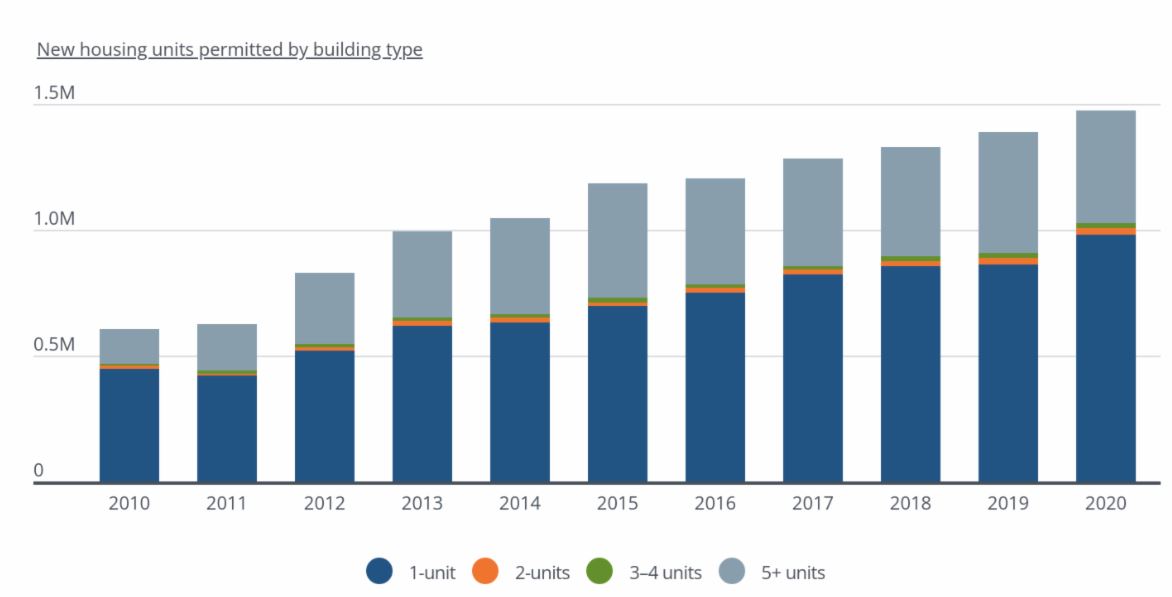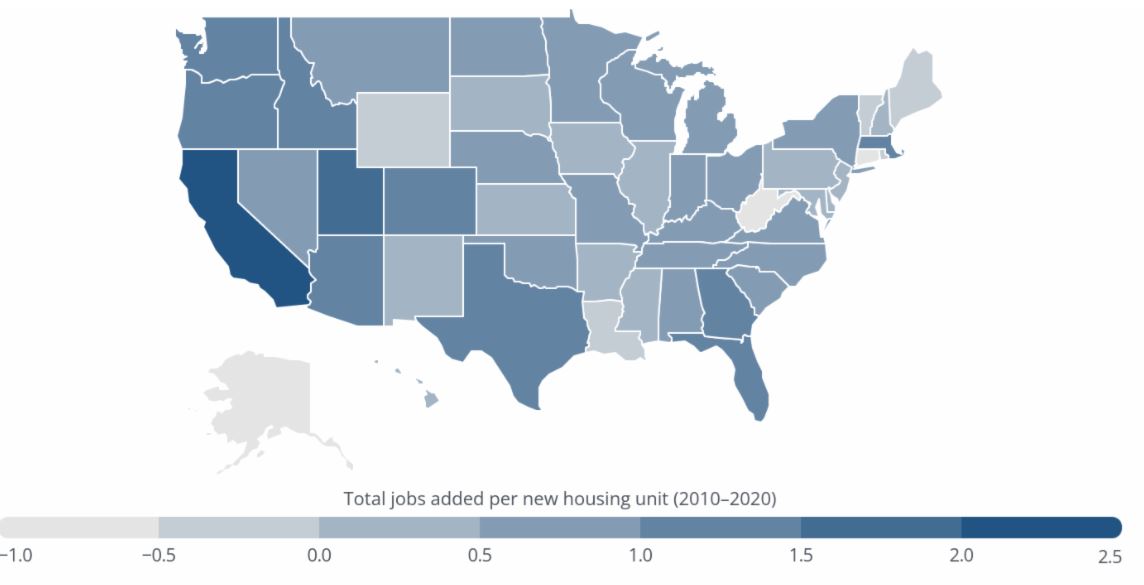A new report from Stessa looks at the total number of jobs added per new housing unit—by location—over the past 10 years throughout the United States. That’s as the nation faces a housing inventory shortage with prices on the rise. Stressa also says locations with a higher number of jobs added per housing unit are more likely to experience housing shortages. Stressa tells us more:
The release of updated Consumer Price Index data in November provided new evidence that the U.S. economy is in an inflationary period. The CPI rose by 6.2% from October 2020 to October 2021, the highest annual rate in three decades. Rising costs have shown up in many sectors of the economy, including energy, transportation, and food, but perhaps the most worrying increase is in the cost of housing.
Price increases in the housing market have been one of the major stories of the economy since the start of the pandemic. In the residential real estate market, the median sales price for a home in the U.S. has grown by around 20% over the last 12 months. For renters, the median rent has increased by 16% since the beginning of 2021.
One of the key factors behind rising housing costs has been insufficient supply. In the summer of 2020, the inventory of homes for sale fell to all-time lows, and while inventory of existing homes has since rebounded to pre-pandemic levels, new construction is not keeping up with demand. Supply chain challenges have made many materials harder to find or more expensive, and many construction businesses are still struggling to fill jobs. As a result, new housing starts are up, but completions have not kept pace. But while the pandemic has put additional pressure on the housing market, supply was already too low in many areas to keep up with population growth and consumer demand. The Federal Home Loan Mortgage Corporation estimated in 2018 that the U.S. had a housing deficit of 2.5 million units.
Part of the challenge in increasing supply is density. A strong majority of consumers prefer living in single-family homes rather than multi-unit buildings, and zoning regulations in many localities restrict higher-density development. Builders have responded to these factors by building more single-family units, with the number of new single-family homes authorized more than doubling over the last decade, from around 418,000 in 2011 to 979,000 in 2020. But one downside is that single-family housing is less efficient for increasing supply than structures with more units, especially in cities that are already more densely populated. Many states and localities with severe housing shortages are now loosening their zoning regulations to alleviate these issues.

The inability for housing stock to keep pace with growth is most troubling in areas where growth is occurring fastest. Parts of the country that are experiencing strong economic growth have attracted more residents who come seeking jobs and other opportunities. Whenever population growth happens more quickly than new housing becomes available, supply and affordability challenges become a greater issue. One of the places where these problems have become a major issue is California. While the state has added millions of jobs in recent decades due to fast-growing industries like technology, the growth of new housing lags behind. California now is among the most expensive states for housing in the country, and its rate of population growth has been slowing as people move away or seek out locations with lower cost of living elsewhere. California is just one of a number of states with an imbalance between housing and job growth.

To find the states building the least new housing relative to job growth, researchers at Stessa analyzed building permit data from the U.S. Census Bureau and employment data from the Bureau of Labor Statistics. Researchers calculated the total number of new housing units authorized by building permits between 2010 and 2020, as well as the total number of jobs added over that span in each state. States were then ranked according to the total number of jobs added per new housing unit; locations with a higher number of jobs added per housing unit are more likely to experience housing shortages.
The analysis found that between 2010 and 2020, Michigan added a total of 168,120 jobs. Over the same period, 183,970 new housing units were authorized by building permits. Overall, Michigan added more homes than jobs. Here is a summary of the data for Michigan:
Total jobs added per new housing unit (2010–2020): 0.91
Total jobs added (2010–2020): 168,120
Total housing units authorized by building permits (2010–2020): 183,970
Share of new housing units that are multi-family (2010–2020): 23.2%
For reference, here are the statistics for the entire United States:
Total jobs added per new housing unit (2010–2020): 1.00
Total jobs added (2010–2020): 12,002,410
Total housing units authorized by building permits (2010–2020): 11,952,731
Share of new housing units that are multi-family (2010–2020): 36.4%
For more information, a detailed methodology, and complete results, you can find the original report on Stessa’s website: https://www.stessa.com/blog/states-building-least-new-housing-relative-to-job-growth/






